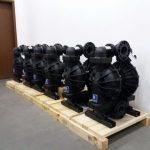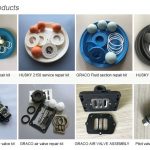peçaskdckdkdkk
Que seja bomba pneumática de diafragma, é comum enfrentar alguns problemas de manutenção, principalmente dependendo do tipo de operação onde ela é implementada. Essas bombas podem ser aplicadas em diversas funções, desde o bombeamento de combustíveis, Lamas, água, e até mesmo produtos químicos. Entregando praticidade e eficiência, as bombas pneumáticas de diafragma são a melhor escolha para quem busca precisão e qualidade.
Thanks to their simple construction, maintenance of these pumps is greatly simplified and can be carried out easily. It is very important to know some basic maintenance tips for pneumatic diaphragm pumps to ensure that the operation remains active and that your company's profitability is not impacted.
For this reason, we have put together some maintenance tips so that you can maintain a productive schedule, avoid downtime and maintain the expected results.
Some routine repairs can help keep your pump efficient and reliable for longer. The first step is to diagnose the equipment to determine the source of the problem before starting the maintenance process. Once this diagnosis has been carried out, you can start repairing your pump:
Problem in the dry part
If it becomes apparent that the cause of Your pump's problem is on the pneumatic end, i.e., the air side of your equipment, the cause may be in the main air valve assembly or pilot valve.
This problem can be caused by dirty air present in the equipment, causing remaining dirt or residue to end up compromising the parts. By installing a filter, this problem can be avoided and your pump can maintain the expected productivity. If the pump still has problems even after cleaning and replacing the components, it is possible that there is a failure in the diaphragm or another component.
To facilitate the maintenance process within this industry, it is interesting to maintain spare parts to carry out replacement if necessary. This way, your industry will be able to save time and avoid the dreaded unavailability that impacts business profitability.
Problems in the wet part
One of the main signs that the pump has problems in the wet part is leaks. In the event of leaks, especially when pumping dangerous fluids, it is necessary to deactivate the pump and isolate it using the discharge and suction valves. Nothing, it is necessary to check the integrity and functionality of the diaphragms.
From this inspection it is possible to check whether the presence of perforations can be resolved with the screen filter installed in the execution line. If the diaphragm has scratches, it may be a sign that there is some contact with the internal chamber of the pump. To solve this problem, it is necessary to raise the pump so that the Central line is balanced with the fluid, or a back pressure device can be installed.
If the diaphragm has a stretched central hole, it may be an indication that an incorrect torque value is being applied. This adjustment can cause the diaphragm to recoil and end up damaging it. High inlet pressures can also harm the diaphragm structure, making it necessary to adapt your pump to your needs according to the demand for productivity.
Another obvious sign that something is not right with your pump is deterioration or blistering of the diaphragm. This ending is a clear indication of chemical compatibility issues.
As we saw, the pneumatic diaphragm pump repairs they can be simple If you pay attention to the signals the pump gives you. Of course, there may be cases where problems are not concentrated in these two factors, but these are the most common situations that can impact the functionality of your pneumatic diaphragm pump.
In the case of other problems, it may be necessary to contact the manufacturer's support to check which is the best solution for your pump.
meet the pneumatic pump ideal for your operation!










